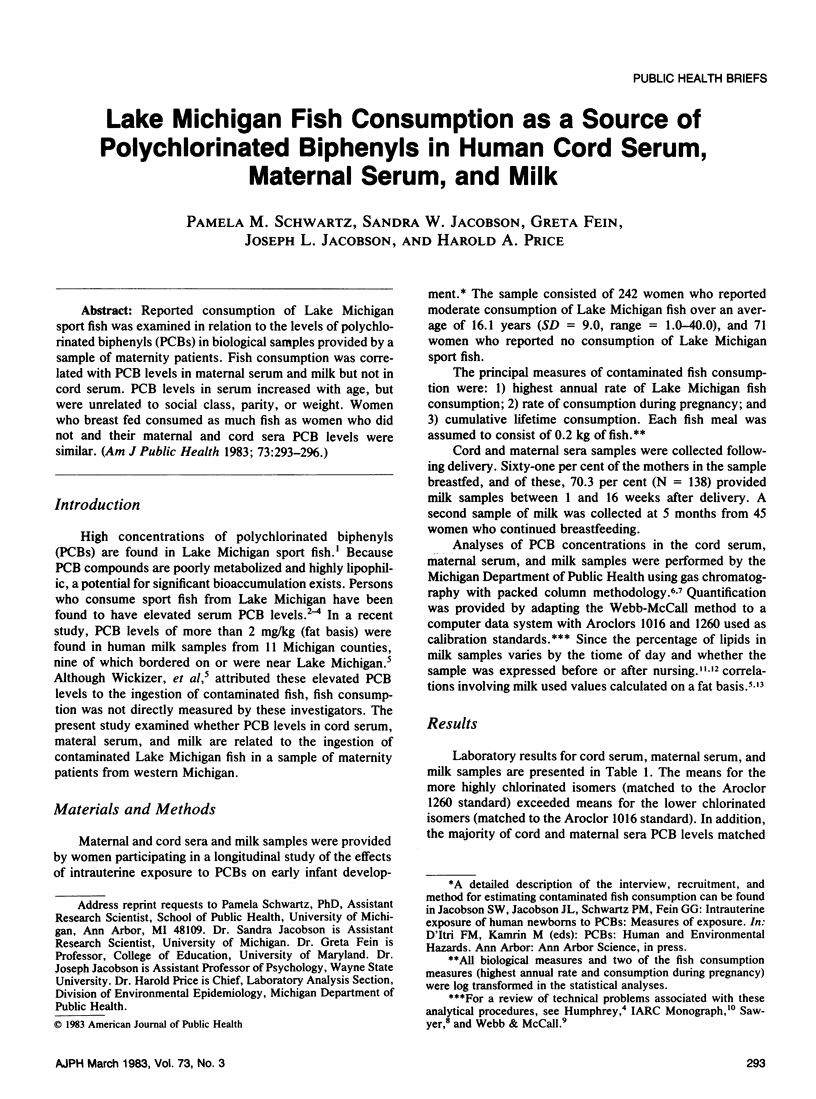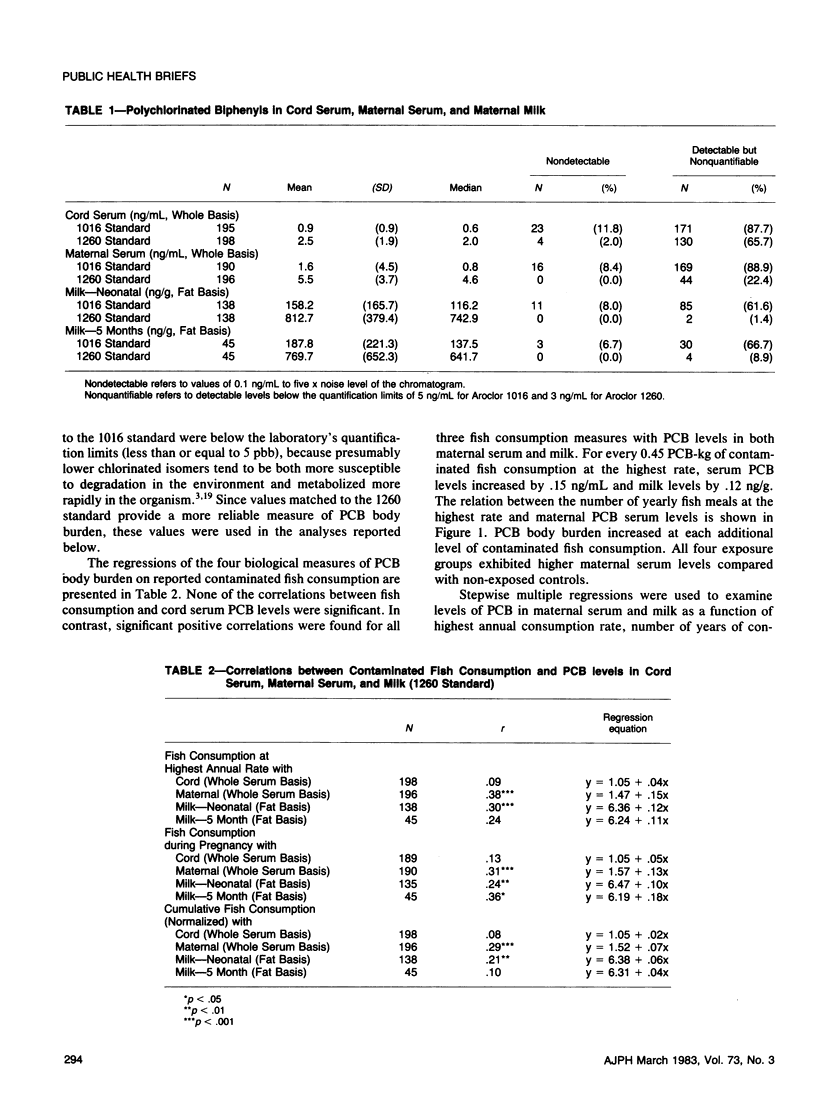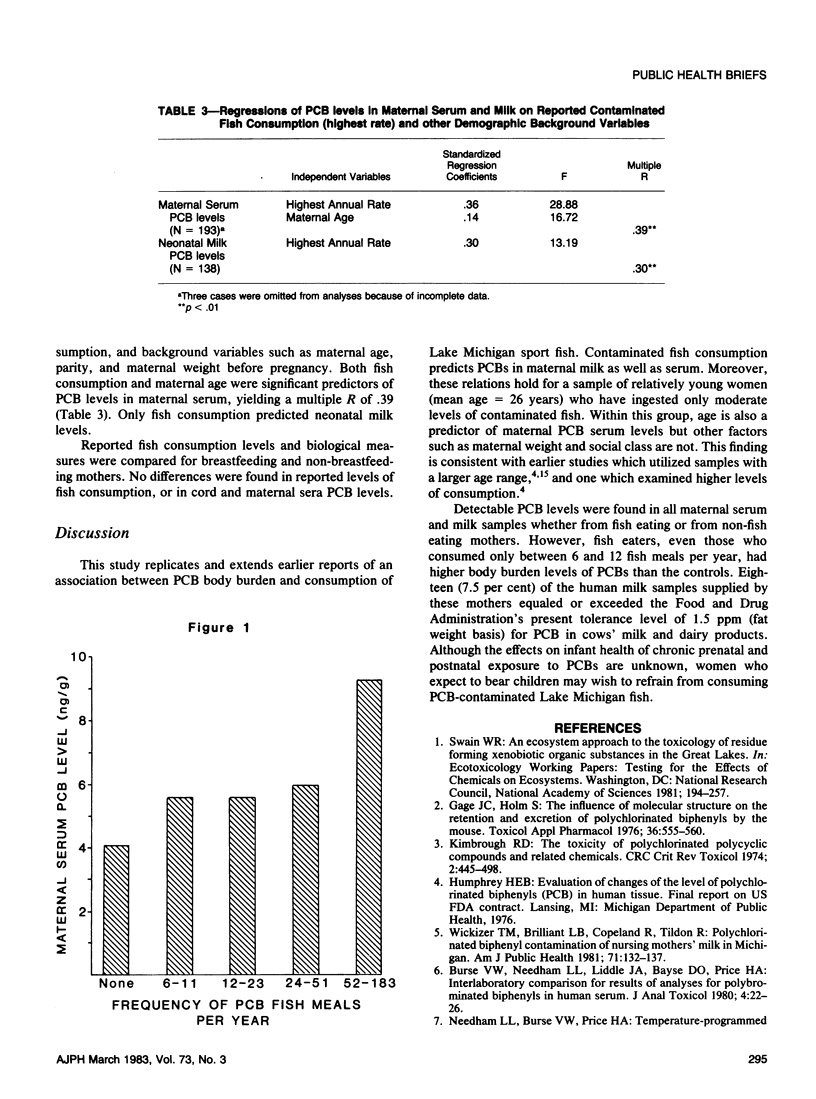Abstract
Reported consumption of Lake Michigan sport fish was examined in relation to the levels of polychlorinated biphenyls (PCBs) in biological samples provided by a sample of maternity patients. Fish consumption was correlated with PCB levels in maternal serum and milk but not in cord serum. PCB levels in serum increased with age, but were unrelated to social class, parity, or weight. Women who breast fed consumed as much fish as women who did not and their maternal and cord sera PCB levels were similar.
Full text
PDF



Selected References
These references are in PubMed. This may not be the complete list of references from this article.
- Brilliant L. B., Wilcox K., Van Amburg G., Eyster J., Isbister J., Bloomer A. W., Humphrey H., Price H. Breast-milk monitoring to measure Michigan's contamination with polybrominated biphenyls. Lancet. 1978 Sep 23;2(8091):643–646. doi: 10.1016/s0140-6736(78)92758-7. [DOI] [PubMed] [Google Scholar]
- Burse V. W., Needham L. L., Liddle J. A., Bayse D. D., Price H. A. Interlaboratory comparison for results of analyses for polybrominated biphenyls in human serum. J Anal Toxicol. 1980 Jan-Feb;4(1):22–26. doi: 10.1093/jat/4.1.22. [DOI] [PubMed] [Google Scholar]
- Gage J. C., Holm S. The influence of molecular structure on the retention and excretion of polychlorinated biphenyls by the mouse. Toxicol Appl Pharmacol. 1976 Jun;36(3):555–560. doi: 10.1016/0041-008x(76)90234-9. [DOI] [PubMed] [Google Scholar]
- Jensen R. G., Clark R. M., Ferris A. M. Composition of the lipids in human milk: a review. Lipids. 1980 May;15(5):345–355. doi: 10.1007/BF02533550. [DOI] [PubMed] [Google Scholar]
- Kimbrough R. D. The toxicity of polychlorinated polycyclic compounds and related chemicals. CRC Crit Rev Toxicol. 1974 Jan;2(4):445–498. doi: 10.3109/10408447309025705. [DOI] [PubMed] [Google Scholar]
- Kreiss K., Zack M. M., Kimbrough R. D., Needham L. L., Smrek A. L., Jones B. T. Association of blood pressure and polychlorinated biphenyl levels. JAMA. 1981 Jun 26;245(24):2505–2509. [PubMed] [Google Scholar]
- Sawyer L. D. Quantitation of polychlorinated biphenyl residues by electron capture gas-liquid chromatography: reference material characterization and preliminary study. J Assoc Off Anal Chem. 1978 Mar;61(2):272–281. [PubMed] [Google Scholar]
- Webb R. G., McCall A. C. Quantitative PCB standards for electron capture gas chromatography. J Chromatogr Sci. 1973 Jul;11(7):366–373. doi: 10.1093/chromsci/11.7.366. [DOI] [PubMed] [Google Scholar]
- Wickizer T. M., Brilliant L. B., Copeland R., Tilden R. Polychlorinated biphenyl contamination of nursing mothers' milk in Michigan. Am J Public Health. 1981 Feb;71(2):132–137. doi: 10.2105/ajph.71.2.132. [DOI] [PMC free article] [PubMed] [Google Scholar]
- Wolff M. S., Thornton J., Fischbein A., Lilis R., Selikoff I. J. Disposition of polychlorinated biphenyl congeners in occupationally exposed persons. Toxicol Appl Pharmacol. 1982 Feb;62(2):294–306. doi: 10.1016/0041-008x(82)90128-4. [DOI] [PubMed] [Google Scholar]


